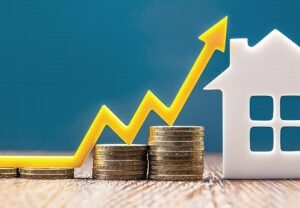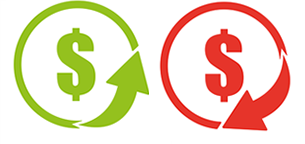How to Shield Your Money From Inflation
 Recent high inflation rates are driving up the price for almost everything and eroding the value of your money. With varying opinions on the potential duration of the current inflation surge, it’s important to understand the causes and how you can protect your money.
Recent high inflation rates are driving up the price for almost everything and eroding the value of your money. With varying opinions on the potential duration of the current inflation surge, it’s important to understand the causes and how you can protect your money.
Possible causes of this inflation
While the root causes of inflation are not always easy to identify, the premise is simple – prices are going up for goods and services. This is often because demand is higher than supply. Here are some of the basic drivers of today’s inflation.
- The demand-pull situation. Demand for a product increases but the supply remains the same. Think of a vendor selling ponchos at a state fair. If it rains, demand is going to spike and fair-goers are willing to pay up to keep dry. This situation is rampant during the pandemic, as we all see runs on things like toilet paper and hand sanitizer. And now we are seeing pent-up demand being released, as some of the pandemic restrictions are eased. An example of this is popular vacation locations being all booked in advance.
- The cost-push situation. Demand stays constant but supply is reduced. An example of this is a lower-yield crop season when a major drought hits a region. Consumers still want their dinner salads, but lettuce is sparse. So, retailers charge more to cover their increased costs. Or when paper mills switched production to handle higher toilet paper demand, pulp used for paper and packaging had supply reductions creating a shortage which increased their prices.
- Factoring in the money supply. The more money there is available to spend (high money supply), the more the demand on all goods and services goes up. This is being manifested in wage increases as employers are having a hard time filling jobs and is also the result of many of the government spending programs during the pandemic.
Ideas to protect yourself during high inflation
- Alternative savings that is NOT cash. The value of your money sitting in your wallet or in low interest bank accounts is shrinking before your eyes. The past year has seen the highest inflation rates in the last decade at 5.4%, according to the Consumer Price Index (CPI). That means if your savings account is earning 0.6%, you’ve lost 4.8% in purchasing power over the last 12 months. Get your money to work for you by considering:
- Low risk, dividend-paying stocks
- CDs, bonds and other investments with various maturities to prepare for higher rates
- Direct lending vehicles through vetted, respected facilitators
- Investing directly in property, small businesses or other tangible assets
- Invest in yourself to learn a new trade or skill
- Lock in fixed rates on debt. Inflation can be your friend if you have a low interest, fixed-rate loan. For example, inflation will tend to increase the value of your house over time, yet your monthly payment will remain the same. So borrowing money at a low fixed interest rate, while the underlying property value increases with inflation, can be a strategy to consider.
- Delay large expenditures. Do your part to reduce demand by postponing large purchases. Consider delaying the purchase of a new car, adding to your home or taking an overseas trip until demand flattens and prices come back to a normal rate.
It’s impossible to avoid the effects of high inflation altogether, but with some smart investing and the will-power to temporarily curb spending, you can reduce inflation’s impact on your personal bottom line.
How to tell the difference
 Not all debt is created equal. Knowing the difference can change the way you look at your spending.
Not all debt is created equal. Knowing the difference can change the way you look at your spending.
Good debt adds value
Good debt often leads to financial growth, because the product or service being purchased adds more value than the debt that comes with it. Student loans are usually an example of good debt because the related education allows you to earn more income.
Some purchases result in value more directly. Taking on a mortgage, for example, can be valuable simply by giving you access to a place to live all while building equity. Additionally, a mortgage is often considered good debt because your property can be used as collateral for other debt once you’ve made some payments on it, or your home has gained in market value. Even better, good debt often comes with a tax deduction on the interest you pay on things like your mortgage or student loans.
Bad debt adds expense
Credit card debt is almost always bad debt. Not only are interest rates on credit cards higher than most other types of debt, but most purchases made with credit cards are for things that do not contribute to personal financial growth. In fact, interest expense is so high that credit card companies are now legally required to display the cost of this debt directly on their billing statements. Auto loans are another example of bad debt, because cars usually lose value quickly, often leaving more money owed on the debt than the car is worth! But even good debt can turn bad if there is too much of it. Take out too large a mortgage and you may struggle to make payments!
Debt always means higher cost
Debt’s big benefit is allowing you to pay for something over time. The cost of any purchase using debt MUST include the interest expense of taking on that debt. You can compare that with the option of saving up money and then making the purchase without interest. Is the extra interest worth the benefit? Comparing the cost of the purchase with interest, to the value you stand to gain by purchasing the asset, can help you determine whether using debt is a good or bad choice for you.
Final thoughts
Here are some ideas on how to manage good versus bad debt.
- Consider carefully what you can afford and make a plan for how you will pay off any debts before you take on the debt.
- Never carry a balance on a credit card unless it is an emergency. Pay the balance in full every month.
- Calculate the entire cost, including interest, of anything you purchase using debt. This is the REAL cost of an item.
- Use savings, whenever possible, to purchase goods and services that would otherwise be considered bad debt.
- Pay off high interest debt first.
- Financial growth is often the key measure for defining good versus bad debt, but not always. Other factors, like personal interest, growth, and well-being can also be measures for your debt decisions, as long as you can truly afford the payments.
Reach out for help if you aren’t confident whether a potential debt will be beneficial or harmful. Making the right choice could save you money.
Last week we gave you the first half of a list of essential economic concepts that every high school student should understand. Here’s the second half of the list!
The strength of investing – The most valuable investment a young person can make is in themselves. Whether it is a college degree or a trade school diploma, your child can create tremendous value in skills that will provide a positive financial return each year.
Mutual fund and stock understanding – Once your child grasps self-investment, next consider teaching some of the basic investment alternatives available to them. Stocks and mutual funds are the most common, but also consider explaining bonds, CD’s, annuities and other investment tools.
Budgeting – Help your student create a basic budget and then help them track their saving and spending against the budget. Don’t forget to mention an emergency fund to prepare for the surprises in life.
Cash flow – The hard way to learn the lesson of cash flow is when bill collectors are calling and there simply isn’t money to pay them. When creating an initial budget, show your child the flow of funds each month. An easy example of this is to show the flow of funds that relate to car. There are everyday expenses like fuel, there are monthly expenses like a car payment or insurance, and there are periodic expenses for licensing and maintenance.
Calculation of net worth – Assets (what you own) minus liabilities (what you owe others) equals net worth. This is the math of banks and businesses. The sooner your child understands this concept, the easier it will be to plan to purchase a car, a house, or any other item of value.
The value of identity – The value of a personal identity is the most undervalued asset owned by your child. Online media may seem free, but your child has paid for this access with their identity. With the advent of identity theft, government/employer access to personal online information and the proliferation of online advertising, consider helping your child understand the value of having a small online footprint. Help them establish healthy habits that will protect their personal information.
I hope you find this information helpful in preparing your child for a sound financial future.